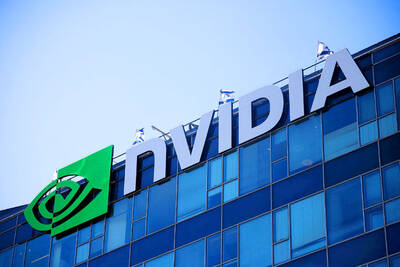Scientists and activists are on a collision course over a new technology that operates on a microscopic scale but could have massive ramifications, and the confrontation could derail the rapidly emerging field of nanotechnology, a Canadian study shows.
Nanotechnology, the manipulation of atoms and molecules on the scale of a nanometer -- one-billionth of a meter -- could give humans a science-fiction-like power to remake nature as easily as a child assembles and rearranges Lego blocks.
Scientists herald nanotechnology as the first major scientific revolution of the 21st century, which could open a world of wonders for humanity, researchers at a bioethics think tank at the University of Toronto said on Thursday.
Its applications include everything from nanorobots, or nanobots -- tiny machines that could travel throughout the body destroying viruses or cancer cells -- to data storage systems the size of a sugar cube, which could hold virtually everything ever published.
But those opposed to the technology argue that there could be severe environmental damage, including the release of nanomaterials that could create illnesses not seen before.
Some critics outline a scenario where trillions of self-reproducing nanobots take on a life of their own and reduce our planet to a massive "grey goo" -- a theme popularized in Michael Crichton's recent novel Prey.
"The scary scenarios are the ones that will undermine public confidence and support of nanotechnology," said Abdallah Daar, director of the Joint Center for Bioethics at the University of Toronto, who is also co-author of the study published in the British journal Nanotechnology.
"We see a widening gap between the science and the ethics. The backlash is already gathering momentum and we've seen calls for a moratorium," said Peter Singer, who is also director of the bioethics center and a co-author of the study.
A Winnipeg-based organization called ETC Group has proposed a moratorium on commercial production of nanomaterials. It wants a global process to evaluate the socioeconomic, health and environmental implications of the technology.
ETC estimates nanotechnology will create an economic "revolution" worth US$1 trillion by 2015 in virtually all sectors of the economy, but poses a fundamental question: "Who will control nanotechnology?"
"We're moving toward a showdown of the type we saw in genetically modified crops," Singer said. "That would be very unfortunate because the potential benefits of the technology might be prematurely and inappropriately rejected."
Daar and Singer's study calls for a closing of the gap between the science and the ethics. It argues that if the ethics debate does not speed up, the science and research are going to get slowed down.
"What we're saying is that we don't want a moratorium," Daar said. "We need to discuss realistic applications, not scaremongering."
Applications of nanotechnology include removal of greenhouse gases cheaply and efficiently by rearranging the molecules into harmless or even beneficial substances.
Molecules could also be manipulated into creating materials like steel, but would be 100 times stronger and much lighter, or a protective spacesuit that fits better than slacks and a sweat shirt.
The study suggests there should be an appropriate level of funding for research into the ethical issues of nanotechnology and that scientists and activists should interact more.
In addition, developing countries should also be involved in this debate lest they be left behind, creating a new scientific divide similar to the technology and genomics divide that already exists.

GROWING OWINGS: While Luxembourg and China swapped the top three spots, the US continued to be the largest exposure for Taiwan for the 41st consecutive quarter The US remained the largest debtor nation to Taiwan’s banking sector for the 41st consecutive quarter at the end of September, after local banks’ exposure to the US market rose more than 2 percent from three months earlier, the central bank said. Exposure to the US increased to US$198.896 billion, up US$4.026 billion, or 2.07 percent, from US$194.87 billion in the previous quarter, data released by the central bank showed on Friday. Of the increase, about US$1.4 billion came from banks’ investments in securitized products and interbank loans in the US, while another US$2.6 billion stemmed from trust assets, including mutual funds,

AI TALENT: No financial details were released about the deal, in which top Groq executives, including its CEO, would join Nvidia to help advance the technology Nvidia Corp has agreed to a licensing deal with artificial intelligence (AI) start-up Groq, furthering its investments in companies connected to the AI boom and gaining the right to add a new type of technology to its products. The world’s largest publicly traded company has paid for the right to use Groq’s technology and is to integrate its chip design into future products. Some of the start-up’s executives are leaving to join Nvidia to help with that effort, the companies said. Groq would continue as an independent company with a new chief executive, it said on Wednesday in a post on its Web

JOINT EFFORTS: MediaTek would partner with Denso to develop custom chips to support the car-part specialist company’s driver-assist systems in an expanding market MediaTek Inc (聯發科), the world’s largest mobile phone chip designer, yesterday said it is working closely with Japan’s Denso Corp to build a custom automotive system-on-chip (SoC) solution tailored for advanced driver-assistance systems and cockpit systems, adding another customer to its new application-specific IC (ASIC) business. This effort merges Denso’s automotive-grade safety expertise and deep vehicle integration with MediaTek’s technologies cultivated through the development of Media- Tek’s Dimensity AX, leveraging efficient, high-performance SoCs and artificial intelligence (AI) capabilities to offer a scalable, production-ready platform for next-generation driver assistance, the company said in a statement yesterday. “Through this collaboration, we are bringing two

Even as the US is embarked on a bitter rivalry with China over the deployment of artificial intelligence (AI), Chinese technology is quietly making inroads into the US market. Despite considerable geopolitical tensions, Chinese open-source AI models are winning over a growing number of programmers and companies in the US. These are different from the closed generative AI models that have become household names — ChatGPT-maker OpenAI or Google’s Gemini — whose inner workings are fiercely protected. In contrast, “open” models offered by many Chinese rivals, from Alibaba (阿里巴巴) to DeepSeek (深度求索), allow programmers to customize parts of the software to suit their